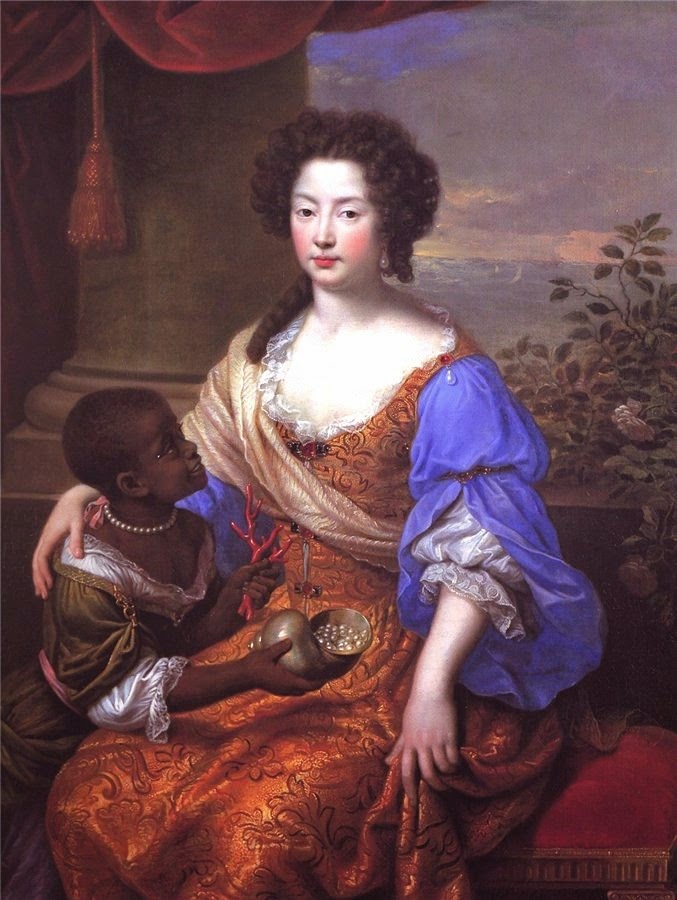Marissa Maister
Blog Post #1
The
theme I would like to explore is portraits of Europeans with African servants,
particularly African children.
To start off one of the first thing to consider when looking at these
images is, where did the African children in these 16th century paintings come
from? Slavery had existed in Europe for many centuries. Although some parts of Europe had slavery
abolished for places such as Southern and Eastern Europe, slavery remained a part of everyday life. Slave trade across the Mediterranean and
along the Atlantic coast brought African slaves to places such as Spain, the
south of France, and Portugal. When it
comes to European portraiture by just looking at it, it is almost impossible to
tell if the young Africans in the paintings are enslaved, one would
have to know some history. The confusion
is due to the manner by which these children are depicted. The adolescents are well dressed in fine
clothing, wearing jewelry and are showing admiration for the European next to them
by looking up at them. Some of the
African children are even smiling while gazing up at the adult next to
them. Various Europeans in the portraits
have a hand placed on the children, a gesture one would expect them to do to their
own children, not their servants. All of
this is most likely due to being a servant of a noble. Most young slaves and servants of a noble probably
would have received lessons in social graces, such as what to wear and how to
eat properly. Portraits of aristocrats
began including black servants to suggest the reach of Western power. These portraits showed how Africans became simply
additions within the images of the aristocrats.
They could be seen as “exotic", or decoration replacing the usual dog or
flower. The slave had become the new symbol of prestige and wealth in society, or be perceived as an indication of power in European
paintings. An excellent example of these
descriptions is Louise de Kéroualle,
Duchess of Portsmouth, which was created in 1682 by Pierre Mignard, a French
artist. In this portrait Mignard depicts
the Duchess of Portsmouth with a young female African servant. The servant is well dressed, with expensive
clothes and jewelry. She is even holding
a seashell full of pearls in one hand and coral in the other. The Duchess has her hand on the child, which
is the only indicator that she even knows the child is there because the
Duchesses gaze is directly on us, the viewer. All while the child is looking up at her with
appreciation. Altogether these aspects
further my argument of how African servants were decoration and sign of power
in aristocratic Europeans. I would like
to find more images, beyond that with women and servants, which further this
argument.

No comments:
Post a Comment